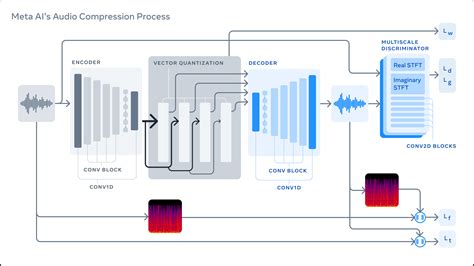The introduction of Meta’s new low bitrate audio codec, MLow, has the potential to revolutionize how we handle audio communication, especially in areas with limited internet bandwidth. While some users have reported mixed feelings about the codec’s quality, particularly during certain distortions, it’s important to take into account the significant advancements this codec represents in terms of achieving acceptable audio quality under stringent constraints.
Many comments highlight that expecting high-fidelity audio at such low bitrates is unrealistic. Compared to existing solutions like Opus, MLow has shown marked improvements, evidenced by its better performance in scenarios with heavy packet loss. This becomes particularly significant when considering applications like VoIP, where maintaining connectivity even under poor network conditions is crucial. With the codec reportedly capable of functioning efficiently even with low computational resources, this innovation stands out.
One of the fascinating insights shared was how the complexity of a codec can introduce unique failures or glitches, which in the case of digital TV, results in intriguing visual artifacts. Similarly, the glitches in audio codecs, while sometimes frustrating, can also be captivating. For instance, the prevalence of ‘datamoshing’, where codec artifacts are intentionally distorted for artistic purposes, has shown that these imperfections can sometimes enthrall rather than irritate.
Moreover, another significant point of discussion revolves around the practical necessity of optimizing for bitrates as low as 10kbps. While LTE supports much higher bitrates, there remain billions worldwide without access to such high-speed internet. For many users in developing countries or specific use cases like satellite communications, having a reliable low bitrate option can be transformative. Meta’s decision to target such low bitrates ensures broader accessibility, catering to diverse user needs across the globe.
Debates have also surfaced around the codec’s efficiency in managing packet loss. MLow’s ability to maintain intelligibility even under conditions of high packet loss demonstrates its robustness. The comparison samples from Opus, particularly when NoLACE (Low Complexity Additional Code Excitation) isn’t used, clearly show MLow as being more resilient. This feature alone makes MLow an attractive option for real-time communications.
However, skepticism remains regarding the overall usage of such low bitrate codecs in environments where higher bandwidths are available. The argument points out that in high congestion scenarios, even a stable 10kbps might not be practically usable due to underlying traffic competition and packet loss. Yet, historical context and examples from telephony suggest there have long been stable low bandwidth connections used effectively. Thus, while a low 10kbps might seem limiting, its application in voice over LTE or VoIP systems over delicate connections can still prove highly beneficial.
One cannot ignore the critiques pertaining to Meta’s track record, especially around their historical use and handling of technology. Comments hint at the dual reputations of Meta as a technological innovator versus their ethical track record. Despite these valid concerns, innovations like MLow contribute to essential advances in audio technology, potentially impacting many who currently struggle with limited network capabilities.
In terms of implementation, other low-bit-rate codecs like Codec2, LPCNet, and Google’s Lyra also come into comparison. Each comes with its unique strengths, yet MLow’s combination of low computational requirements and resilience to packet loss shines, particularly for massive user bases such as those on Facebook Messenger and WhatsApp. The intriguing possibility of integrating such robust codecs into future applications, even for music production or artistic distortion, could open new creative avenues.
Meta’s decision to roll out MLow across its suite of communication platforms notably to billions of users, reflects the strategic importance they place on audio quality. Whether or not this translates to significant storage savings or enhanced user experience on unstable networks remains an empirical question. However, the introduction of MLow certainly sets a new benchmark for what can be achieved in low bitrate audio engineering.


Leave a Reply